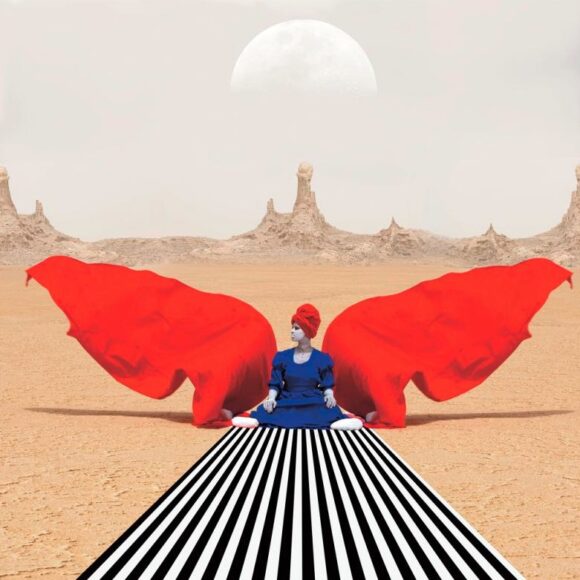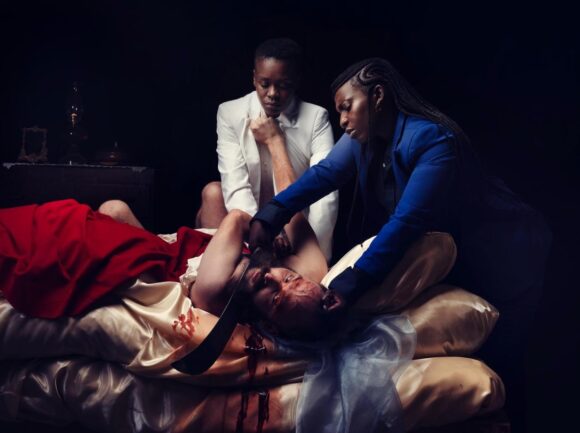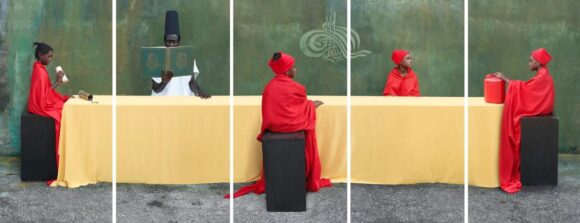
Tate Modern’s selection of contemporary African photography, in a show called, hopefully, A World in Common, is a puzzling event.
On its most basic puzzling level it is surprisingly difficult to follow. Arranged, on paper, into three distinct themes, it fails in reality to make any of them feel solid. Instead we meander backwards and forwards between communal ideas and shared angers.
One big reason for that is that the themes — identity and tradition; counter histories; imagined futures — have a stifling sense of academic pretension to them. They seem to have been learnt in a western evening class rather than in the boiling cauldron of immeasurable creativity that is the multinational, multifaith, multidimensional, multi-energetic continent of Africa. A limitless reality feels as if it is being studied through a monocle.
Most puzzling of all is the flatness of the journey. African photography has been an exciting breakout star of contemporary art in recent decades. The re-emergence of African studio photography in particular, of artists such as Malick Sidibé, Sanlé Sory, Seydou Keita, has been pulse-quickening. But here the excitements are toned down. It’s a lecture, not a party.
Not immediately, though. The show’s opening moments are its best. The Nigerian George Osodi has been photographing the kings and queens who survived the bulldozer of colonisation and who still play a role in the maintenance of an African identity. Osodi pictures them sitting proudly in full regalia, with occasional intrusions from a more prosaic reality — an ordinary pair of shoes, an armchair for a throne — that add slivers of poignancy to the royal demeanours.
Also singled out as a keeper of the flame is religion. Not the colonising forces of Christianity and Islam — the focus elsewhere in the show — but the native religions of Africa: the animist belief systems and ancestral practices that have once again become a source of pride and inspiration in the African diaspora.

The best art on this tricky topic is the immensely moving photographic self-portraiture of Khadija Saye, who died aged 24 in the Grenfell fire. Using an unreliable Victorian process called wet collodion printing, which produces ghostly black-and-white imagery that seems never fully to focus, Saye photographed herself enacting eerie spiritual rituals learnt loosely from her Gambian ancestors.
Ineffably mysterious, Saye’s poetic incantations reach far beyond the preachy level of much of the creativity at this harshly curated event, and voyage deep into the dreamy realms of the nebulous artistic experience. The curatorial mind demands order. The artistic mind demands elbow room.
Still on the topic of religion, but at the heavy-metal end of the creative spectrum, are the ugly photographic tableaux of Kudzanai Chiurai. Clunkily recreating famous old master images, notably Gentileschi’s Judith Slaying Holofernes, but with an all-female cast replacing the biblical males of old, Chiurai comments on the Christian conquest of Africa by European missionaries.
It’s a powerful topic. Unfortunately, the work is so badly lit, so badly acted, so thunderously obvious that it turns good politics into bad art. A recurring problem.
It becomes obvious quickly that the opening focus on Africa’s past, its kings, its religions, is a decoy. At its heart this is a show about contemporary needs. The need to belong. The need to believe. The need to hope that after you depart there is somewhere to arrive.
Identity politics can lead to powerful art, but also to repetitive mantras and dial-it-in creativity. Zina Saro-Wiwa’s point-and-click images of herself wearing Ogoni masks, or Rotimi Fani-Kayode’s subfusc self-portraits, in which he repeats the Ife rituals of his ancestors, are heavy on message but paper thin on invention.

The event slumps glumly into revolving themes and unfocused moods, an effect exaggerated, I fear, by the looming Tate architecture in which it finds itself. The smaller spaces at the start are better suited to personal ruminations than the hard-to-fill hangars at the end. Ndidi Dike’s sprawling installation of files and folders surviving from Nigeria’s colonial era has the distinct air of a space-filler.
Of course there are also artists who are good enough to survive the trial by curator. They are mostly women.
The Italian-Senegalese artist Maimouna Guerresi gives us an exquisite multi-part image of a table, reminiscent of the one on which Jesus had the Last Supper, occupied this time by an Islamic scholar and four female listeners. Atong Atem mines the tradition of the studio portrait, and does it beautifully. Aida Muluneh, from Ethiopia, uses a pared-down colour scheme to blur the divide between reality and dreams.
A powerful irony to note here is that the constant discussion of colonialism remains blind to a big truth hiding in plain sight. Photography, performance, video, installation and curators are not African inventions. All of them have been exported to the continent by the most successful and widespread colonising force the world has ever seen: contemporary art.
A World in Common is at Tate Modern, London SE1, until Jan 14
